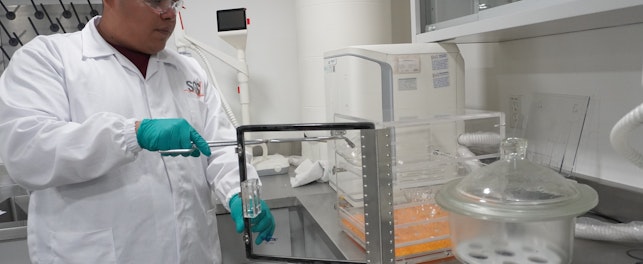Consumers are increasingly looking for clothing that can demonstrate greater sustainability in its production methods. We look at the subject of cotton to see how manufacturers can ensure their products are truly organic.
Cotton is derived from the soft fibers that surround the seeds of plants of the genus Gossypium. There is evidence of its domestication dating back to several thousand years BCE in Peru, Mexico, India and Sudan. However, it was not until the 1770s, and the invention of machines like the spinning jenny, that cotton became the ubiquitous material we all wear.1
Cotton’s softness and durability means that, even today, it remains one of our most popular clothing materials. However, popularity comes at a cost. It is estimated 2,700 liters of water are required to produce a single cotton t-shirt, enough to sustain a person for 900 days.2
Commercial production is also heavily reliant on the use of agrochemicals. Much of the cultivated land used to grow cotton has been in use for decades, meaning it is now depleted. Cotton production therefore also uses vast amounts of nitrogen-based synthetic fertilizers. It is estimated about 150g are used to produce about 450g of raw cotton – the average t-shirt uses just under 450g of raw cotton.3
What is organic cotton?
With regulators and consumers looking for more sustainable products and production methods, organic cotton is now a growth sector. To answer this demand, large fashion chains around the world are committing themselves to using only organic or recycled cotton fibers in their products.4
Organic production is defined under European Union (EU) Regulation (EC) No 834/2007 as, “an overall system of farm management and food production that combines best environmental practices, a high level of biodiversity, the preservation of natural resources, the application of high animal welfare standards and a production method in line with the preference of certain consumers for products produced using natural substances and processes.”5
In recent years, growth in the sector has been substantial. According to the Textile Exchange’s Organic Cotton Market Report 2020, in 2018/19 total global production was 239,787 metric tons, an increase of 31% on the previous year, which itself followed a 56% increase. It is predicted the trend will continue at a slower rate, with production expected to rise by 10% between 2019 and 2020.6
The increasing demand for organic cotton is helping improve soil sustainability, water conservation, air quality, and the livelihoods of farmers. It is also contributing to the fight against climate change.
SGS Solution
SGS offers complete range of services to help brands ensure their products are truly organic. These include non-GMO screening of the raw materials to ensure no genetically modified cotton has been used. This service is conducted using the ISO IWA 32 test method.
We also offer a comprehensive range of chemical residue tests to ensure the finished product is free from a range of substances. These include:
- Alkylphenol and alkylphenol ethoxylates
- Adsorbable organic halogens (AOX)
- Azo dyes
- Chlorinated benzenes and toluenes
- Chlorinated paraffins
- Chlorophenols
- Cyclic siloxanes
- Disperse dyes
- Extractable heavy metals
- Formaldehyde
- Glyoxal
- Organotin compounds
- Per- and polyfluorinated compounds
- Pesticides
- pH value
- Phthalates
- Polycyclic aromatic hydrocarbons
- Total heavy metals
If a particular chemical substance is detected at a level above the acceptable limit, the product cannot claim to be ‘organic’. After all, in the end, it’s only trusted because its tested.
Learn more about SGS Chemical Testing for Textiles.
For more information, please contact:
Tammy Cheng
Director of Global Restricted Substances Testing Services (RSTS)
t: +852 2334 4481
References
1 History of cotton
2 Handle with care
3 What’s So Bad About Cotton?
4 Organic Textile Production Booms As Consumers Demand Sustainable Fashion
5 Organic production and labelling of organic products and repealing Regulation (EEC) No 2092/91
6 Organic Cotton Market Report 2020



